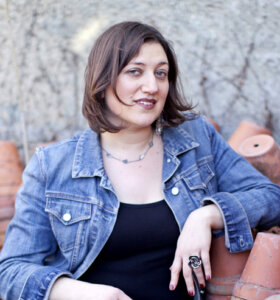Want To Learn Arabic? Start With ‘The Little Prince’

The Little Prince, by Antoine de Saint-Exupery Image by Getty Images
Here’s something lovely and unexpected — “The Little Prince” published in Arabic transliterated into Hebrew, as well as in Arabic itself.
Al-Amir Lehzir is accompanied by a CD of the Arabic narration. Readers of Hebrew can easily follow along, and a short sound clip is up at the publisher’s website.
There is also a video of the book, being read aloud on YouTube — a two-minute glimpse into an extraordinary effort to encourage Hebrew readers to learn Arabic:
The book, priced at 88 shekels, includes a guide to the alphabet and pronunciation. The publication was supported by The Association for Promotion of Arabic Instruction in Israel, as is noted in the first pages of the book.
“The Little Prince,” a classic that is sometimes described as a children’s fable for adults, was written in French by Antoine de Saint-Exupéry, who also illustrated it; “The Little Prince” was published in both French and English in 1943.
“The Little Prince” has been translated into more than 200 languages, and it was made into a film. This edition, in Arabic as well as Arabic with Hebrew letters, was translated by Rowan Abu Ghosh and edited by Asaf Golani.
The publisher, Minerva, is based in Jerusalem, and was founded by Golani in 2003; its focus is the languages and cultures of the Middle East — Hebrew, Arabic, Farsi, and Aramaic. It publishes educational materials to aid in the teaching of those languages, such as a Hebrew-Arabic dictionary, and also maintains an audio archive in Arabic.
The status of the Arabic language in Israel has become a political issue; Israel’s controversial nation-state law, passed in 2018, defined Hebrew as the official language of Israel, with Arabic as a “special-status” language. One-fifth of Israel’s citizens are Israeli Arabs; in 2015 a Tel Aviv University polling institute found that ten percent of Israeli Jews “understand Arabic.”
The change in Arabic’s status prompted strong opposition from scholars of Arabic in Israel.
“Arabic is not only the language of Muslims, Christians and Druze in the Middle East,” Yonatan Mandel, director of the Van Leer Institute’s Center for Jewish-Arab Relations and director of the Forum of Hebrew-Arabic Translators, wrote in an editorial for Ha’aretz. “Arabic was the most common language of a majority of Jews until the 12th century, and continued to be a language of creativity and communication and philosophy for most of the Jews who lived in the countries of the East.”
Mandel pointed out that Maimonides and Sa’adia Gaon, the giants of Jewish thought, wrote in Arabic, and that of all of the most widely spoken languages today, Arabic is closest to Hebrew.
Aviya Kushner is The Forward’s language columnist and the author of The Grammar of God. Follow her on Twitter @AviyaKushner

















